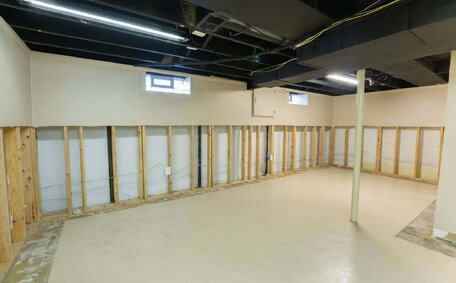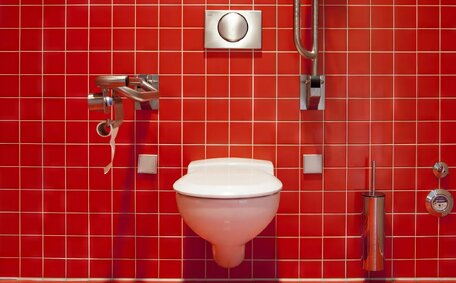What is Pipe Relining and How Does it Work?
Pipe relining utilises a trenchless method to insert a resin-soaked liner into current pipework. The epoxy resin-saturated liner is guided via an inverter drum into the pipes, then expanded, effectively replacing the old pipe. The resin cures and solidifies upon exposure to hot water, ultraviolet light, or steam.
This creates a smooth and durable new interior surface within the existing pipe.
Pipe relining is versatile, accommodating various materials including PVC, clay, iron, and sewer pipes. It is a cost-effective and non-invasive solution that fixes pipe damage with minimal disruption, This avoids the invasive digging associated with conventional pipe repair. Crucially, pipe relining enhances pipe longevity, protecting against wear, root interference, and the development of cracks and leaks.
The process pipe creation, which involves a new pipe within an old one, entails the following steps:
- A CCTV drain inspection to assess the damaged sections of pipe
- Cleaning the pipes with high pressure water jetting
- Removing obstructions and preparing the pipe surface
- Inserting a resin-coated liner, being placed precisely into the sections requiring repair.
- Curing the liner using hot water or steam
- Trim excess material for seamless integration with the existing pipework.
Pipe relining effectively creates a new, durable pipe within the old system, serving as a time and cost-saving alternative to pipe replacement, all while prolonging your plumbing’s lifespan.
Why Choose Pipe Relining Over Replacement
Pipe relining provides numerous advantages over traditional repairs, such as:
- Pipe relining is more economical, with lower material and labour requirements.
- Minimal impact on your home’s aesthetics – Pipe relining bypasses the need for trench digging, preserving your landscape’s integrity.
- A more rapid process, commonly completed within a single day
- Extends the lifespan of your existing pipes by protecting them from further damage
- It addresses leaks, cracks, and blockages effectively without replacing the entire system.
Our team guarantees that pipe relining creates a new lining within existing frameworks, negating the need for excavation and the laying of new pipes. Our team excels in pipe relining services, ensuring your plumbing is restored to its optimal condition without any damage to your property.
It presents a non-invasive, durable solution that preserves both time and money when weighed against replacement.
When to Choose Pipe Relining
There are a few key signs that indicate pipe relining is the best solution for your plumbing system:
- If cracked pipes are leaking water or sewage, this signals the need for relining.
- Root intrusion causing blockages or damage
- General wear tear over time resulting in significant functionality issues
- Blocked pipes that keep getting clogged despite treatments
- Noticeable loss of water pressure in your sewer line system
- Frequent leaks or damp patches around pipe joints
After a comprehensive CCTV inspection, your plumber will expertly initiate the drain repair process. This reveals both the location and the level of damage, empowering us to ascertain how pipe relining serves as an appropriate remedy.
In essence, evaluating whether pipe relining is appropriate is crucial when faced with cracked, persistently blocked, or ageing pipes. We will assess if lining will be effective in fixing problems in your pipes or if a full replacement is necessary. Contact us today and discover what you need know about pipe relining and how we can help with a professional diagnosis of your situation.
Step-by-Step Process of Relining Pipes
Trained technicians follow a structured sequence of steps to reline pipes:
- Initial CCTV Drain Inspection - A camera inspection is undertaken to evaluate damage and locate the affected pipe sections.
- High-Pressure Water Cleaning - Utilising high-pressure water jetting, debris, grease, and tree roots are efficiently cleared within hours.
- Measure and Custom Fabricate the Liner - The liner material is cut to size based on pipe measurements.
- Prepare and Saturate the Liner - The felt liner tube is saturated with a special epoxy resin mixture.
- Insert the Liner - The liner is placed inside pipe infrastructure through an access point such as a manhole.
- Cure the Liner - Hot water or steam inflates and cures the liner, bonding it to the deteriorated old pipes.
- Trim and Reconnect - Excess liner material is trimmed flush and sections of the pipe are reconnected.
- Final CCTV Inspection - A camera verifies the liners correct installation and integrity.
Importantly, our technicians adhere to industry best practices for durable, seamless outcomes. Contact us to learn more about pipe relining or to book our services.
Materials Used in Pipe Relining
We use advanced epoxy resins, selected for their effectiveness and resilience in piping systems. The resin mixture soaks into the felt liner tube, chemically bonding to the old pipe once cured.
Epoxy resin offers:
- Superior adhesive properties to bond the liner securely
- Excellent flexibility and impact resistance
- Resistance to chemicals, abrasion and corrosion
- 100% solids composition for reduced shrinkage
- Ability to cure in humid environments
As a premier pipe relining provider, we offer quality-impregnated pipe liners made from polyester or a polyester-fibre mix. They come in various sizes to suit different pipe diameters. Furthermore, we employ a sophisticated robotic cutter for precision trimming of the liners to match your pipes’ exact dimensions.
Our relining materials satisfy industry quality standards, offering you assurance. Once installed, they ensure a smooth, jointless pipe that prevents structural damage and guards against leaks, roots and corrosion for decades.
Effectiveness and Durability of Relined Pipes
Relined pipes match the effectiveness and longevity of new pipes. The seamless epoxy liner bonds firmly to the pipe walls, creating a smooth, jointless area inside old pipe that prevents future leaks, cracks and blockages.
Advancements in the industry show that correctly installed pipe liners can have a lifespan exceeding 50 years. They are immune to corrosion and provide excellent abrasion resistance from water flow or root intrusion. The liner also adds structural integrity to your weakened or damaged pipe.
An added bonus is the relined pipe can maintain its full pressure capacity and water flow rates. There is no reduction in capacity or functionality compared to new pipeworks. This guarantees unimpeded supply to fixtures and appliances.
In summary, relined pipes offer proof that pipe relining can be an effective long-term solution. The durable epoxy barrier provides enhanced flow, strength, and protection against deterioration - without invasive replacement.
Cost Comparison: Relining vs Replacement
Pipe relining offers notable cost advantages over traditional methods. In terms of saving time and money, the question of Direct material and labour costs with relining are typically 60-70% lower than those associated with new pipe installation. Factoring in indirect expenses like landscape/property restoration and future maintenance, total savings can reach up to 80%.
When calculating the pipe relining cost for a residential property, estimates can be detailed as follows:
- Pipe Relining - $2,500 to $4,500
- Full Replacement - $8,000 to $12,000+
A major advantage of pipe relining is its non-invasive nature, saving substantial costs in landscaping that are usually incurred with traditional trench digging. It also minimises future upkeep as the epoxy barrier effectively safeguards against any future leaks or cracks that could damage your property, unlike traditional pipe replacement.
In summary, delegating the task to pipe relining proves to be more cost-effective, ensuring you save significant expenses and enjoy long-term savings compared to conventional pipe replacement. Contact us to learn how our expert relining services can save you on affordability and value.
Factors That Determine If Pipes Can Be Relined
Several factors determine the suitability of pipe relining:
- Extent of damage - Minor cracks, leaks or corrosion can be repaired, but complete collapses require replacement.
- Pipe material - Clay, concrete, galvanised steel and PVC pipes are commonly relined.
- Pipe configuration - Simple straight sections are ideal. Complex layouts with lots of bends make access difficult.
- Pipe dimensions - Liner tubes come in set sizes, so very large or small diameters may not be suitable.
- Inspection pits - Adequate entry access is required via cleanouts or manholes to introduce the liner.
Our trenchless pipe relining method provides a repair solution superior to conventional, invasive pipe repair techniques. But extensive damage to your pipe or challenging pipe layouts can make replacement the better option. Our expert technicians are deeply involved in pipe analysis and diagnostics, will investigate the extent of damage through a detailed CCTV survey and suggest the most suitable remedial solution.
Key factors such as location and size of cracks/breaks, pipe material, diameter and configuration are meticulously assessed by us when considering relining your pipes. This allows us to determine if lining will adequately restore function. Contact us to diagnose your pipes and determine if relining is right for you.
Typical Timeline For a Pipe Relining Project
How long does pipe relining take? Typically, a project requires 1-2 days from start to finish, which is far less time than full pipe replacement. The timeline consists of:
- Initial Inspection (2-3 hours) - Our team of skilled plumbers utilise CCTV drain inspection to gauge the extent of the damage and prepare accurate measurements.
- Pipe Cleaning (3-5 hours) - High-pressure water jetting cleans out any blockages from debris, roots, grease buildup.
- Liner Preparation (2-3 hours) - The felt liner is cut to size, saturated with epoxy resin, and loaded for insertion.
- Liner Installation & Curing (4-6 hours) - The liner inside is heated and inflated for several hours to cure and bond firmly.
- Final Testing & Finishing (1-2 hours) - Excess liner is trimmed, connections opened, flows tested with final CCTV check.
Depending on factors such as the pipe length and site accessibility, which can influence the timeline, our team ensures most projects are completed within a day, conducted with utmost efficiency. We strive to restore your pipe system’s function efficiently and effectively.






